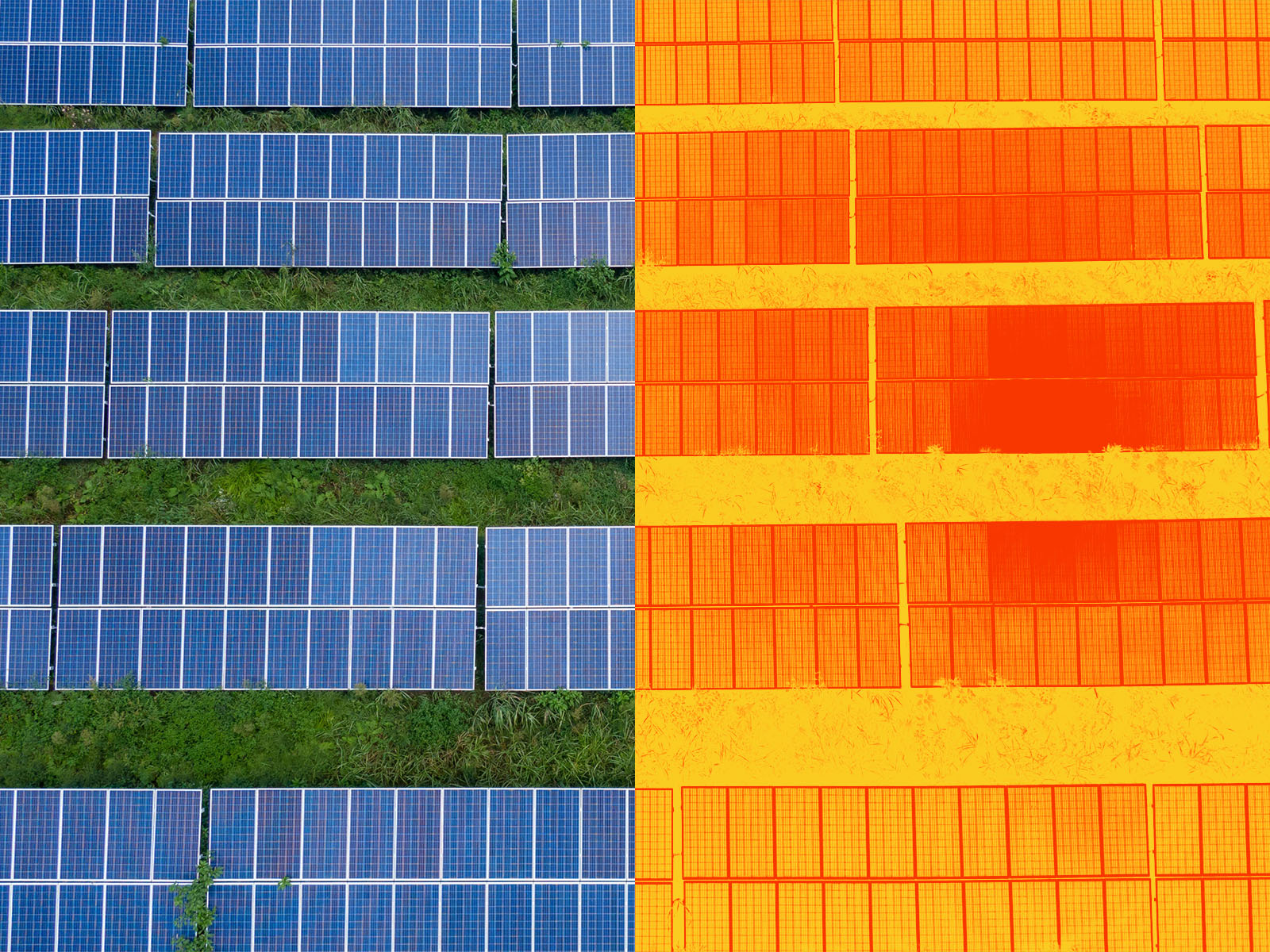Thermal Inspection

What is Thermal Inspection?
What is Thermal Inspection?
Thermal inspection may include the evaluation of cables, contacts, fuses, switches, inverters, and batteries. This preventive maintenance process helps avoid failures, supports power generation efficiency, and ensures the quality and reliability of PV modules.
A detailed thermographic inspection and analysis can include the evaluation of thermal signatures, requiring a deeper understanding of thermal anomalies. It can be used to address the causes of low-performing systems and for regular performance assessments. In PV power plants, inspections should be carried out by a certified expert in collaboration with thermography specialists.
Thermographic Inspection Procedure
The inspection of PV power plants must be performed in compliance with health and safety regulations during commissioning or operation. The recommended interval for periodic thermal inspections is every four years; however, specific frequencies may vary depending on the PV plant owner’s requirements or national electrical safety regulations.
During the inspection of a PV system, a second person should be present as per local safety rules. The scope of the inspection should be defined in advance and agreed upon in writing between the involved parties.
The section of the system being evaluated should be in a thermally stable state and, if possible, free from partial shading. Contamination should be minimal and uniform, avoiding any partial shading effects (e.g., bird droppings, leaves, or vegetation) that may alter thermal readings.
If PV modules show contamination or partial shading due to debris, the entire solar field should be cleaned prior to inspection. Keep in mind that cleaning can affect system performance. Ensure that the modules are in a thermally stable condition both before and after cleaning, prior to conducting infrared imaging.
IR (infrared imaging) can be performed using various methods — handheld cameras, tripods, or drones. The chosen method must meet the required resolution standards, and any known deviations or limitations should be clearly stated in the inspection report.
Inspection results represent the condition of the system at the time of measurement. Intermittent or variable issues may or may not be detected during the inspection process.
Thermographic Visual Inspection
Before performing a thermal inspection, a visual examination is recommended to verify the readiness of the solar power plant. Observations such as bird droppings, heavy soiling, burn marks on modules, or other balance-of-system components should be documented with photos and locations. These issues should be resolved before commissioning-phase thermal inspections and documented again afterward.
When thermal anomalies are observed, the affected modules should be visually inspected, and a reference photo should be captured for each detected anomaly.
Simplified Inspection
A simplified inspection involves a limited evaluation of PV module operation, typically performed during system commissioning. Reliable results regarding module quality are not possible in this phase. Absolute temperatures are not determined; instead, thermal patterns are analyzed to detect anomalies.
Detailed Inspection
A detailed thermographic inspection and analysis can include thermal models, providing valuable insight for troubleshooting and periodic maintenance. During this process, absolute temperature measurements are taken. Certified thermography experts and qualified PV specialists collaborate to perform this high-level evaluation.
What is Thermography?
Thermography is a non-contact, image-based temperature measurement method used to detect, measure, and record thermal anomalies and temperature distributions. Invisible infrared radiation detected by a sensor is converted into a thermal image. On PV modules, it identifies hotspots and evaluates temperature distribution without affecting the measurement object.
With advanced image processing and machine learning algorithms, MapperX automatically detects faults in solar systems. Its AI-based thermal analytics enable precise and automated fault detection.
How Does Thermography Work?
Thermal cameras allow temperature determination under real operating conditions. Inspections are performed from a safe distance without disconnecting any live electrical components. Infrared cameras visualize invisible thermal radiation, revealing anomalies before components fail. Depending on the camera system, thermography not only monitors heat development but also assesses the relative severity of thermal issues.
Why Use Thermography?
Minimizes fire and accident risks
Documents site conditions and potential hazards
Detects weak points or damage early
Optimizes plant availability and reliability
Prevents secondary or collateral damage
Helps reduce energy losses and inefficiencies
